SS1 – Operational Modal Analysis in Aerospace Engineering

Francesco Marulo
Department of Industrial Engineering
University of Napoli Federco II
Via Claudio, 21 – 80125 Napoli – Italy
francesco.marulo@unina.it

Emilio Di Lorenzo
Siemens Digital Industries Software
Simulation and Testing Solutions
Interleuvenlaan, 68 – 3001 Leuven – Belgium
emilio.dilorenzo@siemens.com
Operational Modal Analysis (OMA) is widely employed and became an industrial standard technique for identifying the modal parameters (i.e. resonance frequencies, damping ratios and mode shapes) of mechanical structures. The advantage, if compared with Experimental Modal Analysis (EMA), is that it is not necessary to stop the machine, but its modal characteristics can be estimated during its operating cycles. In other words, OMA does not rely on known and deterministic excitation, but it uses exclusively the natural vibrations of the structure. It is very useful in cases in which the forces cannot be measured or when it is very difficult to excite a structure and it is more convenient to exploit the natural ambient excitation.
In the aerospace field many applications of OMA have been employed, for understanding the dynamic behaviour of light, flexible structures, for analysing data coming from flight testing, for predictive maintenance of systems, for safely operations for wind turbines and, broadly speaking, rotating machines.
This special session of IOMAC 2024 is collecting recent experiences on methods, measurements and simulations which employ OMA in aerospace applications and is bridging for future implementations of AI for improving data analysis, structural optimizations and certification requirements.
Keywords: Flight Testing, Light Structures, Wind Turbines, Numerical-Experimental Correlation, Structural Health Monitoring.
SS2 – Output-only Methods for Bridge Identification and Structural Health Monitoring

Abdollah Malekjafarian
Structural Dynamics and Assessment Laboratory,
School of Civil Engineering, University College Dublin, Ireland
abdollah.malekjafarian@ucd.ie

Robert Corbally
Structural Dynamics and Assessment Laboratory,
School of Civil Engineering, University College Dublin, Ireland
robert.corbally@ucd.ie

Ramin Ghiasi
Structural Dynamics and Assessment Laboratory,
School of Civil Engineering, University College Dublin, Ireland
ramin.ghiasisangani@ucd.ie
This session invites contributions related to operational modal analysis (OMA) and structural health monitoring (SHM) of bridges using either direct methods where sensors are installed directly on the bridge, or indirect ‘drive-by’ methods where sensors in a passing vehicle are used. There have been numerous developments in OMA & SHM of bridges using both direct and indirect methods, including in recent years, a large focus on the data-centric schemes, such as machine learning and artificial intelligence (AI). AI learning methodologies such as Deep learning, Unsupervised learning and Transfer learning are now widely used in the field of bridge condition monitoring. This session will bring together examples of novel theoretical developments and practical examples of OMA/SHM using real case-studies.
The session will focus on, but is not limited to, the following topics:
- Bridge damage detection and health monitoring (highway and railway bridges)
- Identification of bridge modal properties
- Application of machine learning or data-driven techniques in bridge condition monitoring
- Model-driven and data-driven digital twins of bridges
- Bridge condition monitoring using crowd-sourcing
Keywords: Drive-By, Bridge, Structural Health Monitoring, Machine Learning, Response Prediction.
SS3 – OMA and dynamic monitoring of monuments and historical constructions
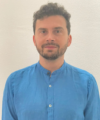
Francesco Clementi
Dept. of Civil and Building Engineering, and Architecture (DICEA)
Università Politecnica delle Marche
Ancona, Italy
francesco.clementi@univpm.it

Carmelo Gentile
Dept. of Architecture, Built environment and Construction engineering (DABC), Politecnico di Milano
Milan, Italy
carmelo.gentile@polimi.it
The development of effective methods for non-destructive testing, assessment and preservation of Architectural Heritage structures, especially in seismic prone areas, is of primary concern in many countries all over the world. Within this context, operational modal testing and continuous dynamic monitoring are quickly increasing in diffusion and importance.
The special session is intended to focus on methodological aspects, new developments and recent applications of OMA and SHM to monuments and historical constructions (e.g. temples, churches, towers, historic bridges and infrastructures). Suitable topics include, but are not limited to, experimental investigations (using conventional or innovative techniques), OMA-based tuning of FE models and damage identification, post-earthquake and seismic assessment, design and implementation of dynamic monitoring systems, OMA-based SHM strategies, effects of environmental and operational variability on modal parameters.
Keywords: Condition-based monitoring, Historical constructions, Masonry, OMA-based model tuning, Seismic assessment, SHM strategies.
SS4 – Vibration-based Assessment & Monitoring for Wind Energy Structures

Eleni Chatzi
ETH Zürich
echatzi@ethz.ch

Nikolaos Dervilis
University of Sheffield
n.dervilis@sheffield.ac.uk
This mini-symposium deals with structural health monitoring algorithms for vibration-based monitoring and condition assessment of wind turbines and wind energy structures. Structural Health Monitoring (SHM) can be used for early stage verification and investigation of uncertainties in the design, serve early warnings of degradation, damage and signal abnormal operation detection, as well as provide input for possible future design and operation optimization. This MS is particularly focused on adoption of vibration-based sensing schemes for digital twinning, condition-based maintenance, life-cycle and remaining useful lifetime assessment for wind energy structures. SHM applications include, amongst others, the measurement of the environmental inflow conditions, wind turbines’ operational conditions, structural load effects (extreme and fatigue cycles), system dynamics (vibrations), mode shapes, natural frequencies and damping characteristics, stress “hot-spots”, etc. Applications, especially on the wind farm level, of probabilistic machine learning and artificial intelligence algorithms, such as neural networks, Bayesian networks and ensemble classifiers are encouraged.
Papers dealing with the following subjects are especially welcomed:
• Real-time schemes for efficent monitoring and diagnostics
• Data-driven and physics-informed methods for virtual sensing and digital twinning
• Physics-constrained deep learning applications
• Experimental investigation and verification of analysis schemes
Keywords: structural health monitoring, vibration-based monitoring, wind energy structures
SS5 – Vibration-based assessment and monitoring of special structures
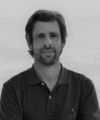
Filipe Magalhães
Construct – Faculty of Engineering, University of Porto, Portugal
filipema@fe.up.pt
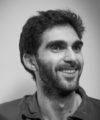
Sérgio Pereira
Construct – Faculty of Engineering, University of Porto, Portugal
sbp@fe.up.pt
After a necessary period for Operation Modal Analysis to mature into a reliable experimental technique, new challenges have emerged due to an expanding range of applications and the diversification of desired outcomes.
In the context of this challenges, this special session aims to gather contributions dealing with challenging case studies motivated, for instance, by low vibration levels as observed in dams, non-white excitation as observed in offshore structures, or significant changes in the monitored structures, as observed in construction equipment, among other case-specific adversities.
To ensure a thorough understanding of the structural behavior, the operation modal analysis of these special structures can be complemented with additional analyses, enabling a comprehensive assessment of the structural performance based on either a single test or the continuous evaluation of the structural condition.
By sharing experiences and solutions in this special session, researchers and experts in the field can collectively address the latest challenges in vibration-based assessment and monitoring of special structures, which promises to result in safer and more reliable infrastructure for the benefit of society
Keywords: Dams, Stadia, Offshore Structures, Construction equipment, Special Buildings.
SS6 – Vibration-based SHM of bridges

Raimondo Betti
Columbia University, New York, USA
rb68@columbia.edu
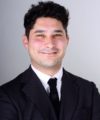
Enrique García-Macías
University of Granada, Spain
enriquegm@ugr.es
The daunting challenges posed by ageing bridge structures and their critical role in the transportation network have led to an increasingly widespread adoption of Structural Health Monitoring (SHM) systems worldwide. Recent tragic collapses, such as Morandi Bridge (Italy) in 2018 or the El Alambrado bridge in March 2023 (Colombia), underscore the urgent need for effective condition-based maintenance strategies. In this context, vibration-based SHM systems utilizing Operational Modal Analysis (OMA) have gained popularity owing to their non-intrusive and non-destructive nature. However, the increasing implementation of such systems brings new challenges associated with the management of extensive monitoring systems. These challenges are transforming SHM into a Big Data problem, in which the implementation of Machine Learning (ML) and Artificial Intelligence (AL) algorithms are becoming increasingly relevant. In this light, this Special Session aims to bring together the latest developments in vibration-based SHM of bridges, fostering discussions on various topics, including:
- Development of new OMA algorithms.
- Application of AI and ML in OMA.
- OMA-driven damage identification.
- Statistical Pattern Recognition.
- Data fusion and data mining techniques.
- Population-based SHM.
- Long-term big data processing and management.
- Field SHM applications to real bridges.
- Internet of things for SHM of bridges.
- OMA-driven Digital Twins.
Keywords: Bridges, Damage Identification, Long-term monitoring, Operational Modal Analysis, Structural Health Monitoring
SS7 – Key software for real world OMA and vibration based SHM applications
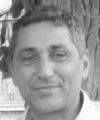
Antonio Occhiuzzi
Università degli Studi di Napoli Parthenope – Department of Engineering
antonio.occhiuzzi@uniparthenope.it

Giovanni Fabbrocino
Department of Biosciences and Territory – University of Molise
giovanni.fabbrocino@unimol.it
Vibration based methods for the dynamic identification of civil engineering structures demonstrated their ability in providing useful and detailed information on the structural and non-structural components under operational conditions. They are extensively used during the commissioning phase for new structures as well as structural characterization and assessment of existing ones. Moreover, consolidated knowledge and experience have been gained in the area of automated OMA, so that modal parameters as measure of the health state of structures are used in the framework of Structural Health Monitoring (SHM) applications.
The session is designed to offer to the technical community an up-to-date prospect of real-world applications of OMA for single/periodic tests or permanent vibration-based SHM solutions.
In particular, contributions focused on real applications are expected to illustrate the practical needs in terms of computational tools and to discuss the role of the existing commercial software products to resolve given technical challenges.
Keywords: Real world OMA, Vibration-based SHM, software solutions, Tools for OMA & SHM.
SS8 – Physics-based Model Updating in Structural Health Monitoring, Earthquake Engineering and Structural Dynamics

Joel Conte
Department of Structural Engineering
University of California at San Diego
La Jolla, CA 92093-0085

Rodrigo Astroza
Faculty of Engineering and Applied Sciences
Universidad de los Andes
Santiago, Chile
rastroza@miuandes.cl

Geert Lombaert
Department of Civil Engineering
KU Leuven
B-3001 Leuven, Belgium
geert.lombaert@kuleuven.be

Kristof Maes
Department of Civil Engineering
KU Leuven
B-3001 Leuven, Belgium
kristof.maes@kuleuven.be
Over the last decade, model calibration or updating has become increasingly important in science and engineering. This session will focus on physics-based model calibration or updating of civil infrastructures systems based on experimental data, field data or high-fidelity computational simulation data in the areas of structural health monitoring, earthquake engineering and structural dynamics. It will include the development, application, and use of model calibration/updating methods.
Keywords: Physics-based models; Civil infrastructure systems; Model calibration; Model updating; Structural health monitoring; Earthquake engineering.
SS9 – Direct Structural Health Monitoring of Engineering Structures
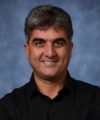
Piervincenzo Rizzo
University of Pittsburgh, SWANSON School of Engineering
Department of Civil & Environmental Engineering
3700 O’Hara Street, 729 Benedum Hall, Pittsburgh, PA 15261-2294 USA
pir3@pitt.edu

Fabrizio Ricci
Department of Industrial Engineering,
University of Naples Federico II,
fabricci@unina.it
This session invites contributions related to structural health monitoring (SHM) based on vibrations, guided ultrasonic waves, or other direct sensor-based methodologies. Target structures include but are not limited to pipes, rails, aircraft components, pavements, and bridges. Experimental, analytical, and numerical works that expand the analysis of real-time information to data-centric strategies, such as machine learning and transfer learning are welcome. Topics include but are not limited to:
– modal-based SHM;
– guided ultrasonic waves;
– acoustic emission;
– artificial intelligence for SHM application.
The scope of the session is to foster the dialogue and the cross-pollination across distant SHM methodologies to converge toward multi-modal strategies that augment the state-of-the-art in the health monitoring and inspection of the engineering structures.
Keywords: Structural health monitoring, modal analysis, guided ultrasonic waves, machine learning.
SS10 – Vibration serviceability of footbridges

Vitomir Racic
Faculty of Civil Engineering
University of Belgrade
Serbia
vracic@grf.bg.ac.rs
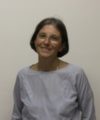
Maria Gabriella Mulas
Department of Civil and Environmental Engineering
Politecnico di Milano
Milan, Italy
mariagabriella.mulas@polimi.it
This session provides an opportunity to meet, discuss and present the latest research relevant to the vibration serviceability issues and assessment of footbridges. Focus of the session is the latest scientific developments related to experimental measurements and numerical modelling of:
– vibration source (e.g. pedestrians, traffic, wind),
– vibration path (e.g. modal properties, simple or complex FE models, model validation, human-structure interaction),
– vibration receiver (e.g. vibration-related human factors and human perception of vibrations)
– vibration control (e.g. passive and active).
Keywords: dynamic loading; crowds; pedestrian traffic; vibration source; vibration path; vibration receiver; vibration control.